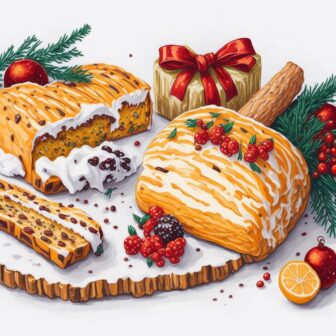German Christmas Traditions: What to Do in Germany for Christmas (2023)
With gingerbread, the scent of cloves and pine needles in the luggage, the Christmas season sneaks quietly into everyday life. Suddenly the first Christmas decorations can be leafed through everywhere, Christmas carols can be heard in the shops and slowly but surely the hustle and bustle in the shopping streets begins on the weekends. And so all over Germany the German Christmas traditions come in focus again. They are the best guide for what to do in Germany for Christmas.
German Christmas Tradition 1 - The Christmas tree
One of the well-heard and most well-known traditions is the Christmas tree. In the Rhineland, this Christmas tradition has its origins around the year 1800. At that time, the first so-called “trees of light” were set up in the living rooms of the citizens.
In contrast to today, the tree was decorated with apples and colored paper in the early days. Nowadays, the Christmas tree has a place of honor, where it is decorated with fairy lights and a variety of Christmas symbols. Evergreen plants adorned with lights embody the vitality of nature in the middle of the darkest days of winter.
German Christmas Tradition 2 - Heaven plays and crib
The origins of the Christmas tree are said to be found in the Heaven Tree of the Medieval Heaven plays on December 24th.
Heaven plays were performed in the church at Christmas - December 24 used to be the liturgical memorial of Adam and Eve. The nativity play, in which the Christmas story about the birth of Jesus is shown, has developed from the Christmas play.
Small nativity scenes for the home still convey the events using figures in a more or less detailed setting and connect the Advent season with the Epiphany on January 6th.
German Christmas Tradition 3 - Buy gifts
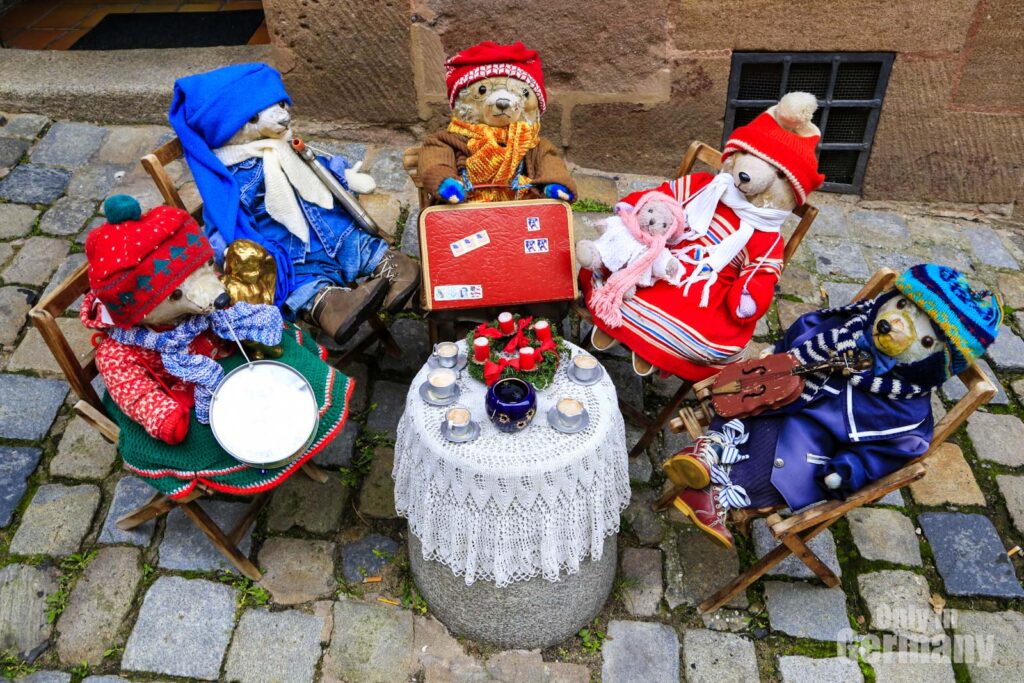
What would a Christmas tree be without gifts? In the 21st century it would be absolutely incomplete. For this reason, the many Christmas presents are as much a part of the typical Christmas tradition as the tree itself.
However, this custom begins before the actual act of giving on December 24th, 25th or 26th. Basically, these traditions began in the run-up to Christmas when searching, finding and buying presents.
In the meantime, considerable sums are being collected, so that retail and online trade are experiencing an absolute high at this time of the year.
German Christmas Tradition 4 - The gift giving
In most countries, people don’t celebrate Christmas until December 25th. In this country, however, the celebration is a day earlier.
December 24th is Christmas Eve and every family has some traditions on this special day. While some decorate the tree together, others stand in the kitchen for hours to conjure up a delicious and festive meal for the family.
However, one thing is the same everywhere, because the gifts usually follow after the meal. This means the part of the evening where the presents can finally be unwrapped. Festive music creates an even more contemplative atmosphere.
German Christmas Tradition 5 - Carols
What would the Christmas season be without Christmas carols? During Advent, singing Christmas carols together is a beautiful Christmas tradition.
In many parishes, the faithful also come together on a Sunday during the Christmas season and listen to the parish choirs singing the most beautiful Christmas carols.
German Christmas Tradition 6 - Worship service on Christmas Eve
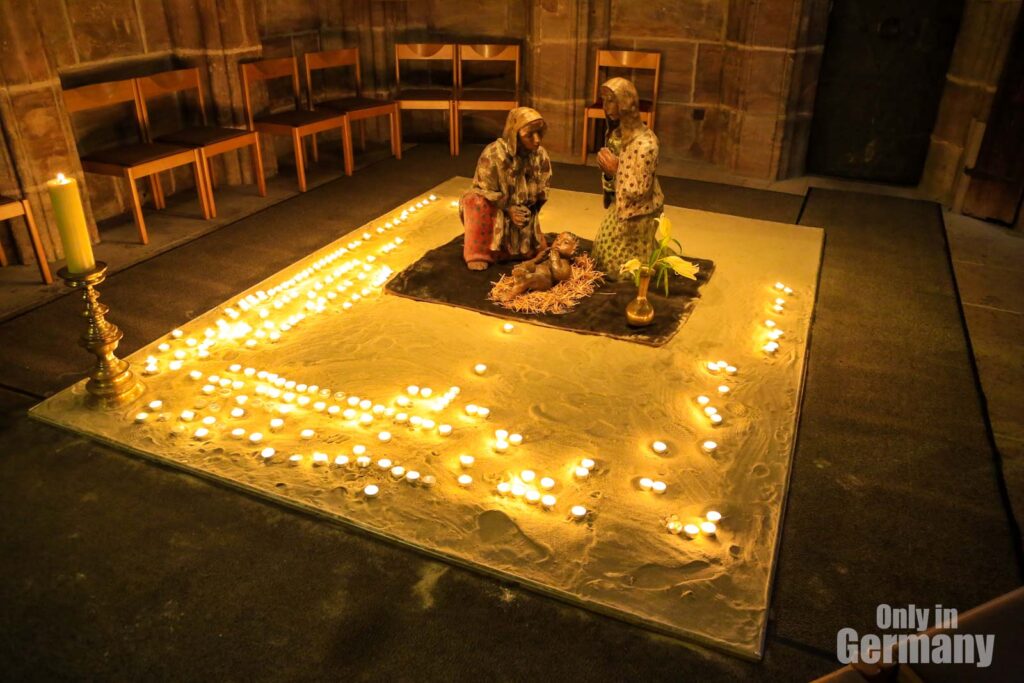
There are many Christmas fans who attend the service in the carnival church on Christmas Eve before the big feast and before the presents are given.
German Christmas Tradition 7 - The advent calendar
For the youngest members of the family, counting the days until December 24 is a special spectacle. Why? Of course, the classic advent calendar provides a little tasty surprise every day.
Usually it is a candy like a small bar of chocolate. But there are now numerous models that are suitable for a wide variety of tastes and needs.
German Christmas Tradition 8 - The Advent wreath
There is also a popular “countdown custom” for adults to count the days or weeks until Christmas. This is the Advent wreath, which is one of the most classic Christmas traditions every year.
Every Sunday - starting with the first Advent, which is sometimes already the last weekend in November - a candle is lit on the wreath. When all four candles are burning, it’s not far to Christmas Eve.
Nowadays, the Advent wreaths are often self-made, so that they appear in numerous variants and shapes. Crafting with family members can also be a nice tradition.
German Christmas Tradition 9 - Visit the Christmas markets
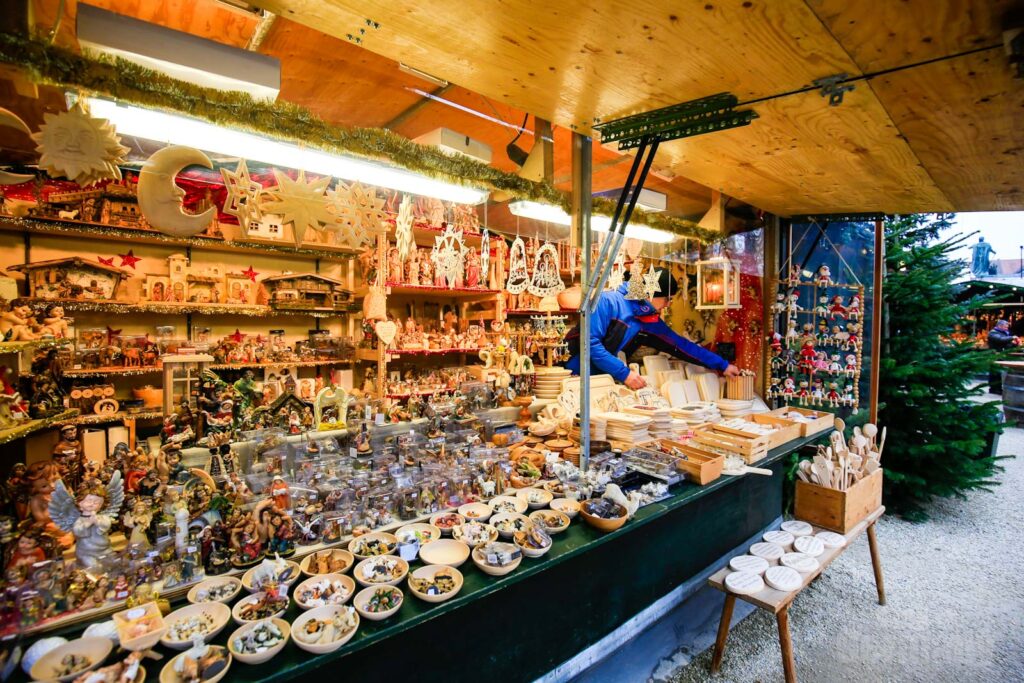
You can really stroll, enjoy and relax along the diverse food and drink stands. Christmas markets are magical attractions every year.
There is actually a market in every city that opens on the first Advent. Lumumba, mulled wine and roasted almonds are among the popular snacks and drinks.
In addition, you can also discover Christmas tree decorations, candles and much more here. Nuremberg, Dresden and Aachen are particularly well-known for their Christmas markets.
RELATED:
Best Hotels in Dresden
Best Places to Visit in Dresden
German Christmas Tradition 10 - Cleaning boots for St. Nicholas Day
Before the big present on December 24th, there will be a small present for many kids on December 6th. The well-known and popular St. Nicholas Day goes hand in hand with another tradition.
On December 5th, the children clean their boots or shoes, which are then placed in front of the house or room door so that St. Nicholas can fill them with little things.
German Christmas Tradition 11- Santa Claus
Santa Claus is an amalgamation of Nikolaus and Knecht Ruprecht and has a long tradition in all Nordic countries - including northern and eastern Germany.
Originally St. Nicholas Day on December 6th was the day of Christmas presents. Saint Nicholas asked the children if they had been good. The “good” children received praise and a gift, the “bad” reprimands and a smack with a rod.
Knecht Ruprecht or another sinister fellow in Nikolaus’ entourage often took over the last part. There were also St. Nicholas processions and Perchten runs, in which terrifying demon figures in masks and disguises played a major role.
They probably had their origin in fertility rites of pre-Christian times. Nikolaus, also known locally as Belzenickel, came to the New World as Sinterklaas via the Netherlands, where he made a career as Santa Claus.
Incidentally, adults did not receive Santa Claus gifts in the past, but instead on New Year’s Day. In some areas, fruits and “branches of life” or “rods” as well as pastries were distributed at the parades.
German Christmas Tradition 12 - Christ Child
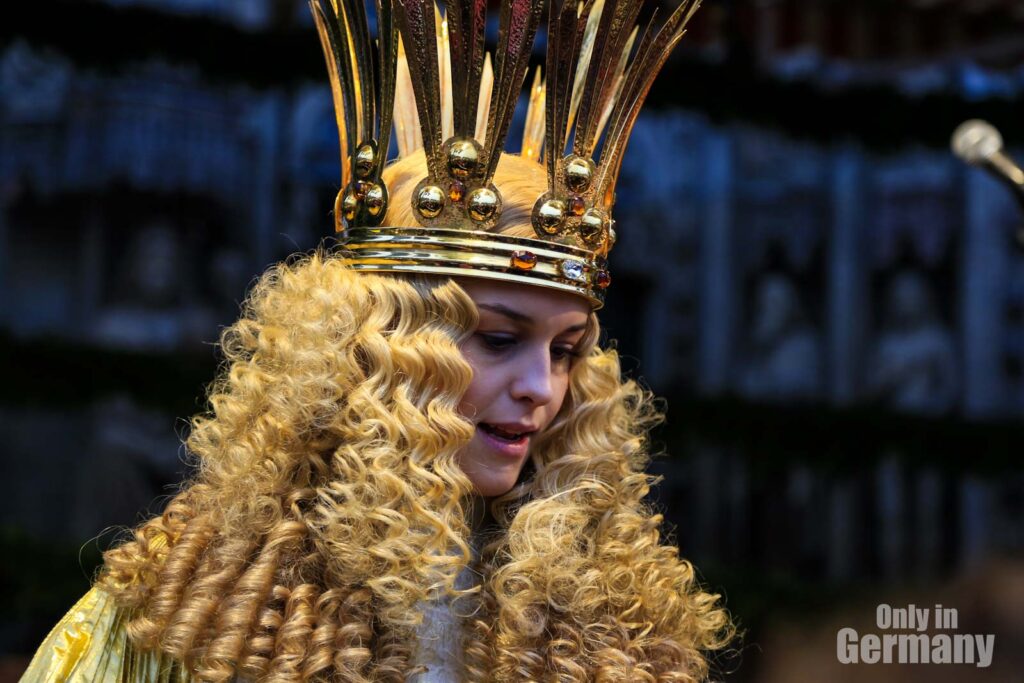
In Germany, meanwhile, with the Reformation, Nikolaus had competition from the Christ Child. Martin Luther himself is said to have moved the giving of presents from December 6th to Christmas Eve on the 24th, since the Protestant Church does not know any veneration of saints.
Only the baby Jesus could be the bringer of gifts, from which the angelic Christ child developed. This in turn found its way into the southern and western German Catholic areas, where it still gives children presents, while in northern and eastern Germany it was supplanted by Santa Claus after 1800.
It contains both elements of Nicholas and Knecht Ruprecht. He is known all over Northern Europe - in England as Father Christmas, in France as Père Noël and in Russia as Father Frost.
German Christmas Tradition 13 - Prune Man
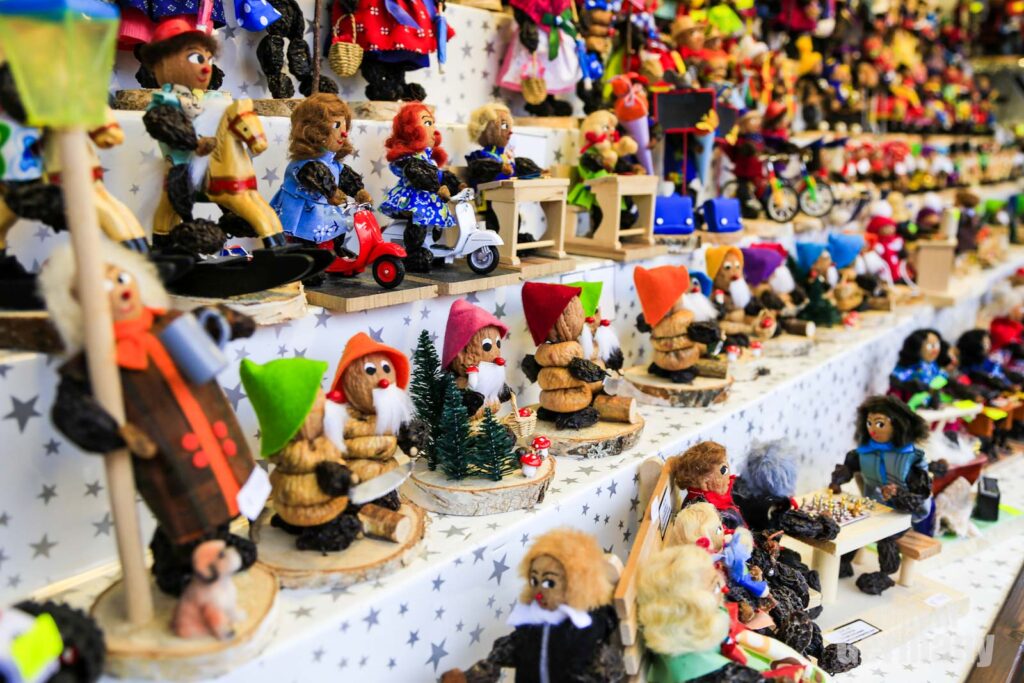
Since many years ago, Zwetschgenmännle—the beloved prune figurines—have been available for purchase at the Christkindlesmarkt. There are more than 350 distinct figurines to choose from, including “naked” ones, chimney sweeps for good luck, and lovers sharing a kiss.
Numerous people “live” in the world of the prune men, including musicians who play the guitar and piano, chefs and servers, pastors and the devil, among others. The figurines, which range in height from nine to 22 cm, stand out on the shelves of the booths where they are sold.
According to legend, a wire puller from Nuremberg created prune men in the 18th century. He wanted to give his kids something special, but all he had was some wire and a plum tree in front of his house. The smart solution was a prune guy.
According to folklore, his kids consumed the prunes, but today, every booth has a sign that reads - Not fit for consumption.
RELATED
20 Christmas Foods in Germany: What to eat and drink in Germany for Christmas
Festivals and customs in Germany
Carnival in Germany
German Christmas Tradition 14 - Go on vacation
A custom that is not quite as old in the Christmas context is traveling at the most contemplative time of the year. Some of the most popular travel destinations in winter include: North Sea, Baltic Sea, Rhineland-Palatinate, Moselle valley, Bavaria and The Black Forest.
However, a vacation at Christmas time is often associated with an increase in costs. In addition to the Christmas presents, there are also financial expenses for accommodation, food and the like. In addition, a Christmas holiday often costs a little more, since it is now, similar to summer, a very popular travel time.





